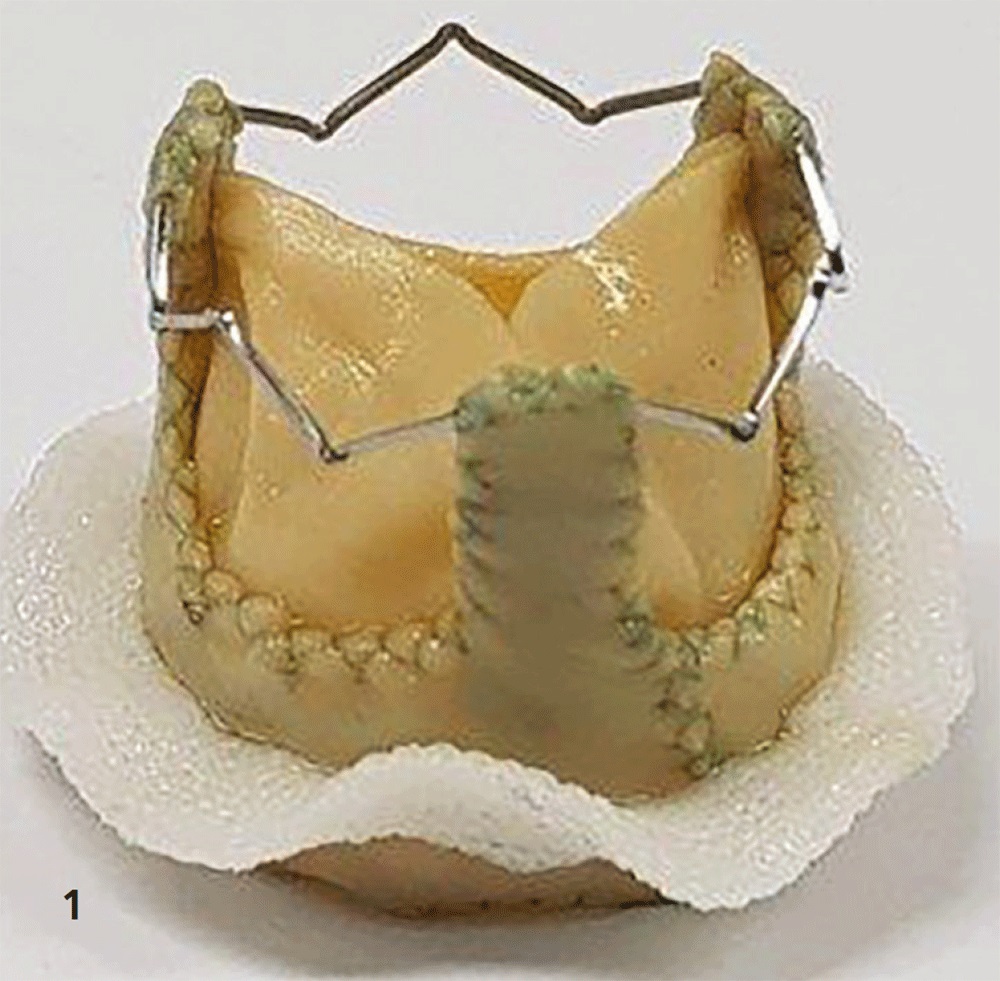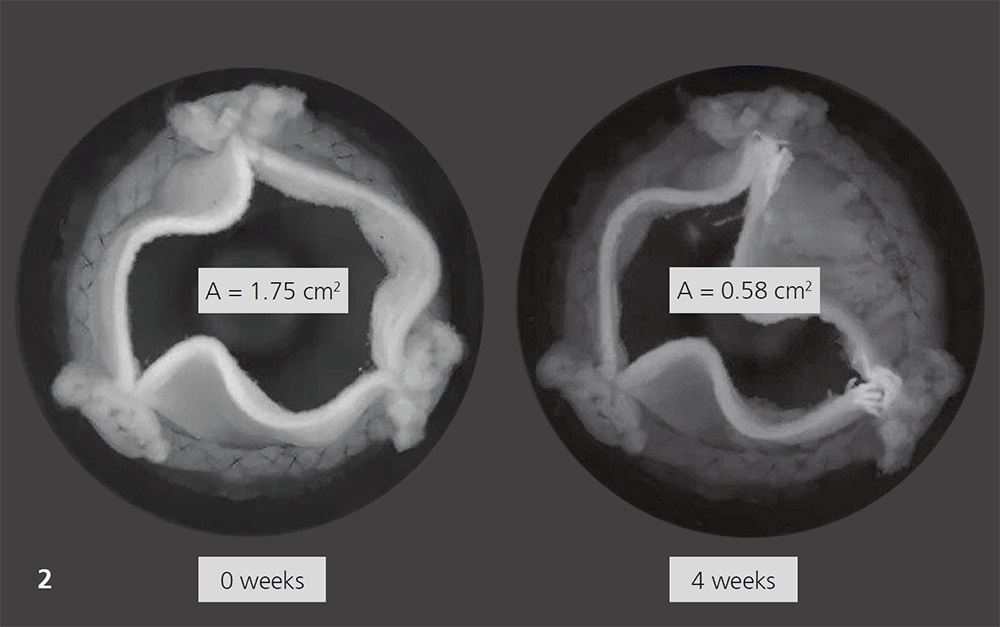

Aortic valve stenosis, the constriction of the outflow tract, is one of the most common heart valve diseases, followed by mitral valve regurgitation. Today 300,000 to 400,000 heart valve replacement surgeries are performed annually all over the world. In general, two types of heart valve bioprostheses are used: mechanical and biological. Biological valves offer a higher ten-year-survival rate, are silent and require no anticoagulation therapy. A disadvantage, however, is their limited service life (12 years on average), because calcification and material fatigue impair the functionality of the valve leaflets.
Chemical treatment against calcification
As part of a master's thesis at Fraunhofer IKTS, new chemical pretreatments were investigated to prevent the calcification of porcine bioprostheses for heart valves. For this purpose, pericardial tissue was selected as the base material and crosslinked with substance molecules for stabilization. Instead of the more traditional glutaraldehyde crosslinking, diepoxide was used to counteract calcification. Crosslinking was performed with and without the immobilization of biophosphonates.
Natural human heart valves operate in a complex interaction of anatomical-structural properties with environmental conditions. They are determined by the anatomical position of the valve and the pumping function of the heart. Calcification is characterized by the deposition of crystalline hydroxyapatite and is a long-term complication, the investigation of which requires a considerable amount of time and experimental effort in the lab. Two accelerated fluid-dynamic in-vitro calcification tests were used to analyze the samples. Calcification fluids with a modified electrolyte concentration (increased calcium and phosphate concentration compared with human blood plasma) as well as a high cyclic load served as accelerating factors. The pH value of the solution was buffered and corresponded to that of human blood plasma.
Great potential for biphosphonates
After 6 to 8 weeks of long-term testing, the calcified heart valves were examined using traditional methods, such as scanning electron microscopy (SEM), Raman spectroscopy and micro-computer tomography (μCT). The study showed a promising effect of bisphosphonates on the calcification of heart valve replacements. The anti-calcification treatment must, however, be confirmed in further in-vitro and in-vivo tests as well as in clinical trials.
The work was supported through a collaboration with the Institute for Applied Medical Technology, Rheinisch-Westfälische Technische Hochschule Aachen and the Meshalkin National Medical Research Center in Novosibirsk (Russia).